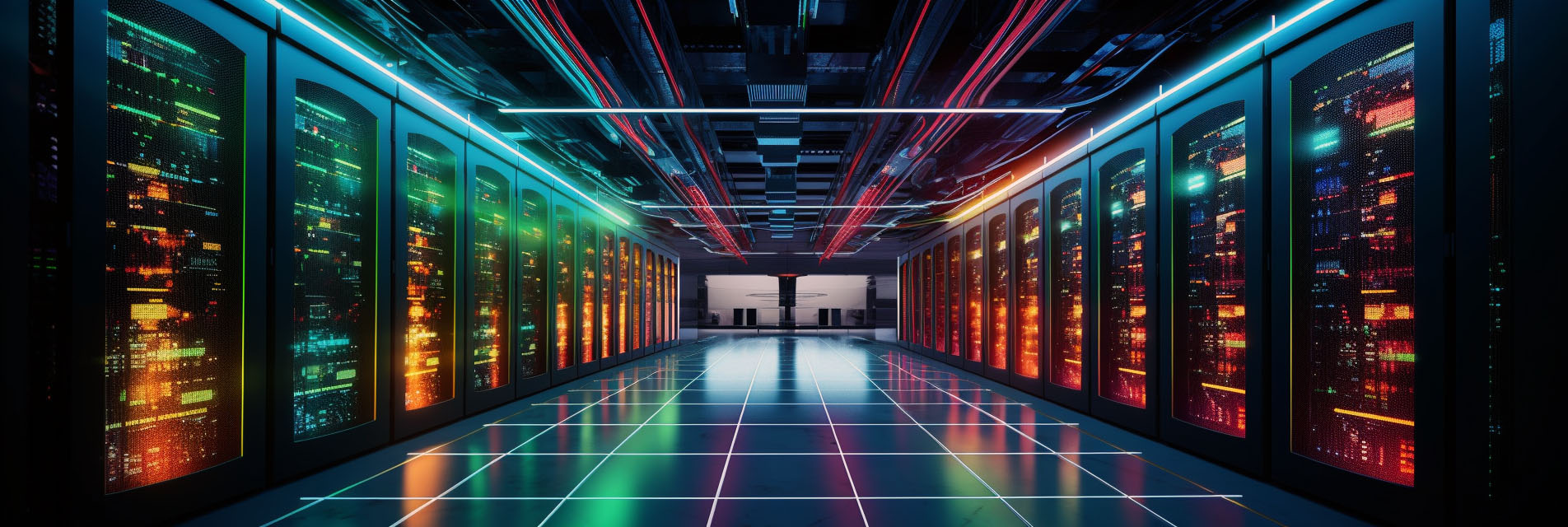Energy-Efficient AI Systems
Feedsee Energy : Energy-Efficient AI Systems : Improving the energy efficiency of artificial intelligence systems in data centers.

MidJourney Prompt: energy efficiency at a data center --ar 3:1
Paderborn University is leading an international research project to improve the energy efficiency of artificial intelligence (AI) systems in data centers. The project, announced on September 13, 2023, aims to reduce power consumption and CO2 emissions by using programmable hardware in the form of FPGAs instead of CPUs and GPUs, and a special method called approximate computing to reduce the accuracy of individual calculation steps without adversely affecting the quality required for model forecasting. The team hopes to provide a quantitative assessment of power consumption and make it transparent to AI system users, with initial results expected in 2024.
Artificial intelligence systems, especially large neural networks, require immense amounts of computing power during the training process. This translates to very high energy usage as the hardware used for training, namely graphics processing units (GPUs), consume large amounts of electricity. The energy required scales with the size and complexity of the AI model being trained. For example, training a large natural language processing model can emit as much carbon as five cars over their lifetimes.
Glossary
CPU: Central Processing Unit. It is the primary component of a computer that performs the instructions of a program by carrying out basic arithmetic, logical, input/output, and control operations specified by the instructions.
GPU: Graphics Processing Unit. It is a specialized electronic circuit designed to quickly manipulate and alter memory to accelerate the creation of images and videos on a display screen.
FPGA: Field-Programmable Gate Array. It is an integrated circuit that can be programmed after manufacturing to perform a specific digital function.
Why is Artificial Intelligence Energy Intensive?
Artificial intelligence (AI) models, especially deep learning algorithms, require a significant amount of computational power for both training and inference. This computational demand translates into high energy consumption. Below are some key reasons why AI is energy-intensive:
1. Complex Computations
Deep learning algorithms like convolutional neural networks (CNNs) and recurrent neural networks (RNNs) involve a myriad of complex mathematical operations. Performing these computations requires powerful hardware, which in turn, consumes a lot of energy.
2. Big Data
AI models often require large datasets for training. Processing these large datasets to extract useful features necessitates considerable computational effort and, consequently, energy.
3. Iterative Training
Training a machine learning model is an iterative process that may involve running the model hundreds or thousands of times. Each iteration consumes energy, and the sum total can be substantial.
4. Specialized Hardware
Specialized hardware like Graphics Processing Units (GPUs) and Tensor Processing Units (TPUs) are commonly used for AI tasks. While they are optimized for performance, they are also energy-intensive.
5. Parallel Processing
AI workloads are often distributed across multiple machines in a data center to speed up computations. Operating multiple machines in parallel increases energy consumption.
6. Continuous Operation
AI services often need to be available 24/7, leading to sustained energy use for both running the algorithms and cooling the data centers that house them.
7. Data Storage
Storing the massive datasets required for AI also consumes energy. Data centers not only need to power the storage hardware but also the infrastructure to keep that hardware operational, such as cooling systems.
The computational complexity, large data requirements, and continuous operation demands of AI contribute to its high energy consumption.